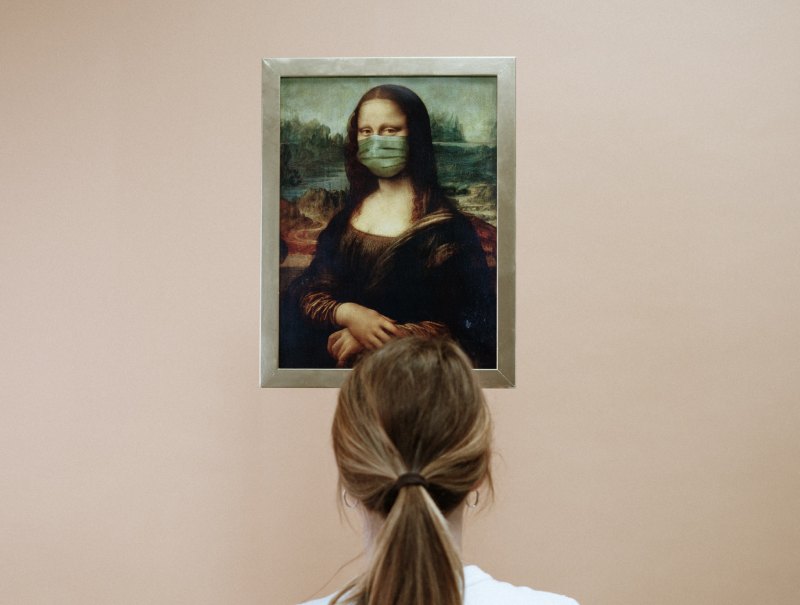Indoor air quality (IAQ) is now more important than ever. Whole home IAQ products like air scrubbers, UV lamps, and ventilators can reduce and eliminate volatile organic compounds and particulates from your home’s indoor air. They install directly onto your HVAC system and clean the air running through your home’s ductwork. HVAC UV lights, in particular, can have a profound effect on your home’s IAQ. Read on to learn more about how these products work.
Indoor Contaminants, Particulates, and Your IAQ
Conventional air conditioner filters are fine for reducing the amount of larger inorganic particles that infiltrate your ductwork. However, too often smaller living microorganisms called bioaerosols slip through your standard filtration media and escape into your household’s indoor air environment. In addition to this infiltration of bioaerosols like mold spores, bacteria and mildew, other common airborne pollutants such as dust mites, secondhand smoke, pet dander, and dangerous gases such as radon and carbon monoxide can be found in your home. All of these contaminants create poor indoor air quality that can significantly affect your health and trigger allergies and respiratory problems. One tactic for neutralizing some of these pests has been found to be helpful is ultraviolet germicidal irradiation technology, or UV lights.
HVAC UV Lights in Clinics and Hospitals
For years UV lights have been utilized in clinics and hospitals. This keeps both air and medical surfaces clean and disinfected. While they might not be a cure-all for all of your poor indoor air quality problems, studies show they are effective at eliminating organic pollutants. This includes mold, mildew, fungus, bacteria and also viruses in HVAC ducts and in air handling units. This is where moist conditions usually prevail. These types of microorganisms may be especially prevalent in Georgia homes. Most people keep their windows and doors tightly shut in the hot and humid days of summer. To free your ductwork and your indoor environment of breeding pollutants, UV lights can be installed throughout the ducts and near the evaporator coil. These lights are focused on traveling microorganisms, and kill them as they circulate through your air conditioning equipment.
Some air treatment systems are also installed with photocatalytic reactors. When activated by the ultraviolet light, can reduce volatile organic compounds (VOCs), the compounds released from chemicals, fumes and vapors found in building materials, furniture, solvents and the like.
How a system utilizing UV light technology works
- An HVAC professional will install a single or dual UV lamp within your ductwork or near your evaporator coil (the coil that is inside your home). This UV lamp emits a continual germicidal light on all of the indoor air that flows through your ductwork.
- This UV light is capable of penetrating the DNA of microorganisms like mold. It can also disrupt their reproduction cycles, leading to germ elimination.
- Because an efficient cooling system circulates a household’s worth of air throughout your home several times a day, your indoor air will receive a constant disinfection treatment by the installed UV lights. After just the first 45 minutes of ultraviolet light treatment, as much as 50 percent of the bioaersols in your home may be destroyed.
- Because ultraviolet lights function on wavelength it doesn’t disperse aerosols. Homeowners know they are safely sterilizing their indoor air environment without releasing dangerous ozone that can affect indoor air quality. Many aerosols contain materials capable of triggering and causing allergy and respiratory problems, making UV lights the more human-friendly solution.
Variable Speed Technology in UV Systems
Typically the use of UV lights operate at 24/7 intensity. While this is extremely effective, is also a bit of overkill. New automated UV disinfection systems now exist to apply the most effective amount of UV light. This will also help reduce electrical costs for the system by as much as 80 percent. By using variable speed technology in UV systems, homeowners are able to utilize the air purifying benefits of ultraviolet lights while using less energy. These variable speed systems are especially efficient when installed near the air conditioner’s air handler coils. When air handler cooling coils are left unchecked, they quickly accumulate a hazardous bio-film full of bacteria, debris, mold, and other micro-organisms. This bio-film build-up constricts airflow and heat transfer efficiency. It makesn the HVAC system work harder and requires greater amounts of energy.
Automated UV lamp systems are installed near air handler coils. The surface-contaminated coils are then cleaned and disinfected in addition to the air flowing through the cooling system. In this way, the homeowner wins on multiple accounts. Cleaner air handler coils create a more efficient, cost-effective HVAC system. They decrease airborne contaminants create healthier, and also more improved air quality. Because these ultraviolet lights are turned on only when needed, the homeowner saves doubly on energy costs.
HVAC UV Light Technology for Your Georgia Home
Ready to learn more about how UV lights can significantly improve the indoor air quality in your Georgia home? Want to learn about other high-quality heating and cooling products and services? Contact your local HVAC experts at Byrd Heating and Air Conditioning. Byrd Heating and Air Conditioning has been serving the Savannah, Garden City and Tremont Park areas since 1986.
Image via Pexels by Cottonbro

